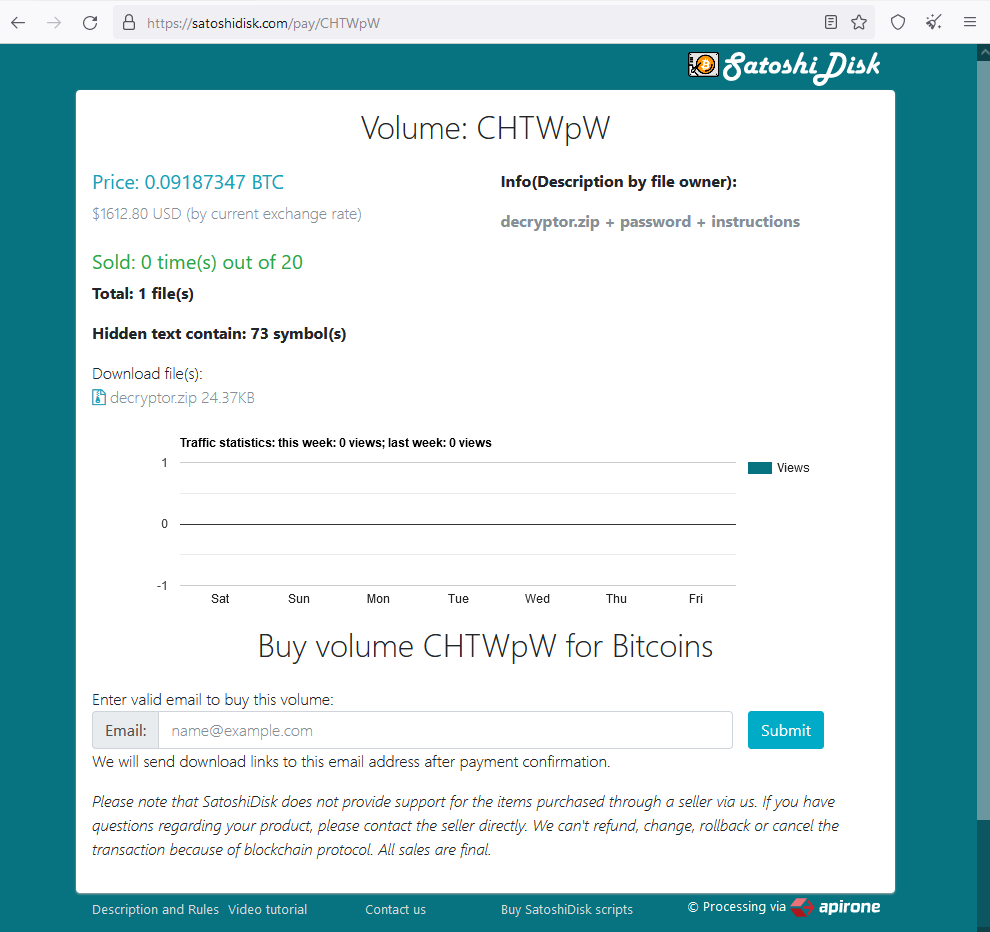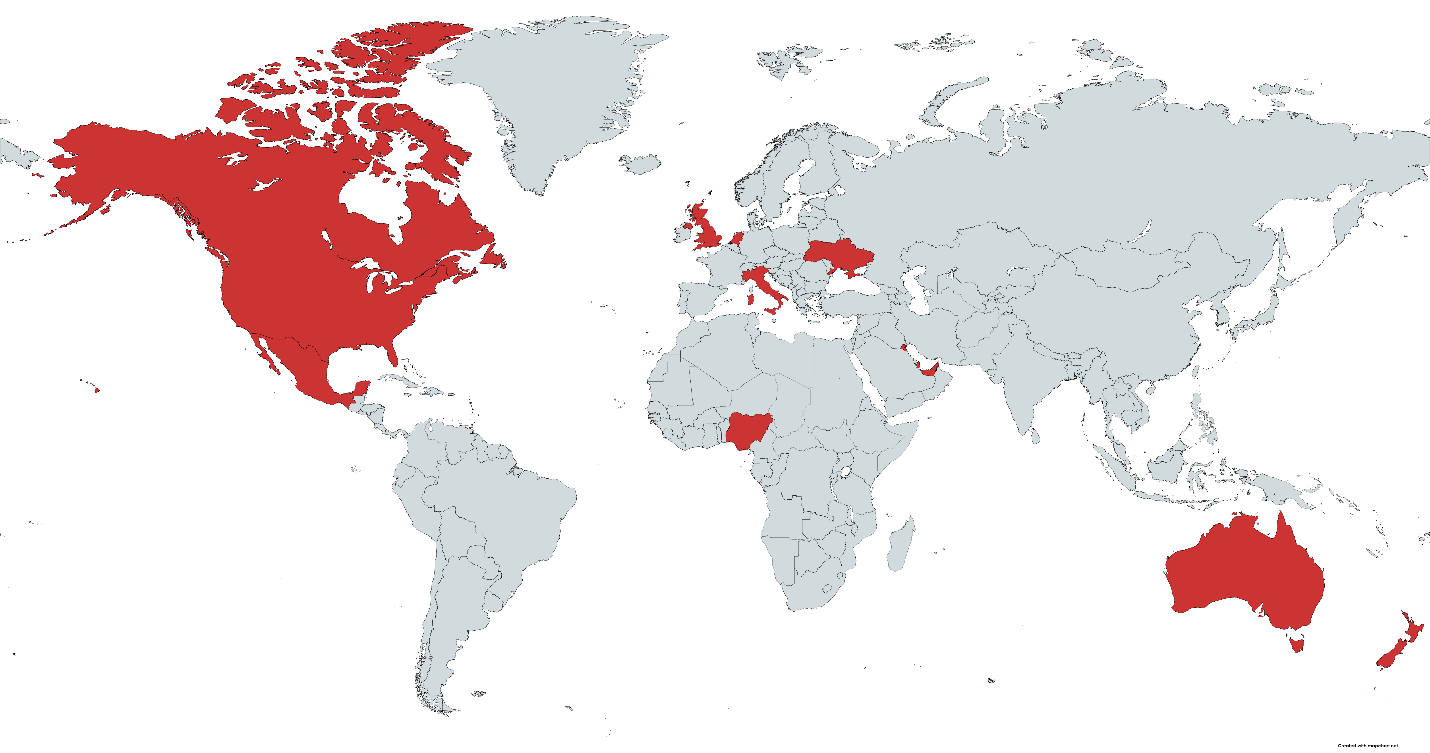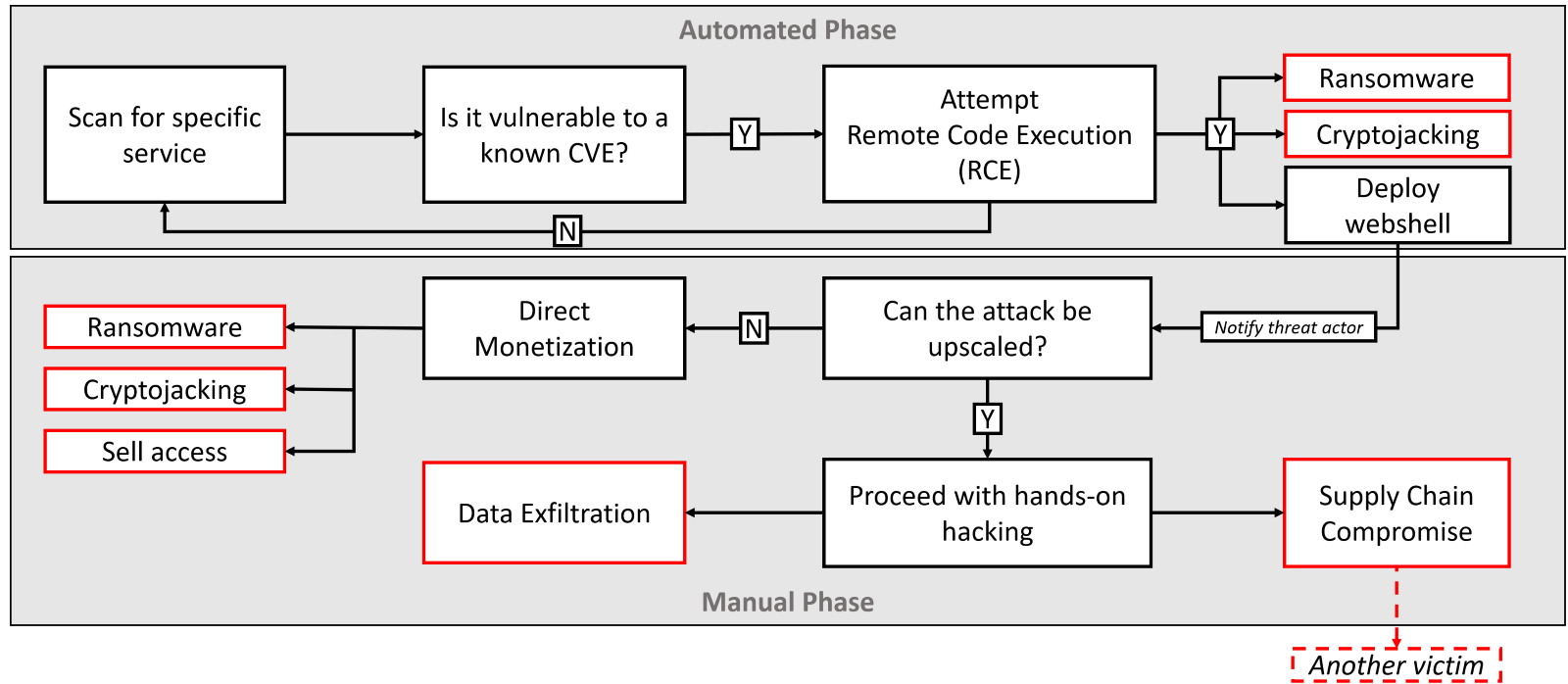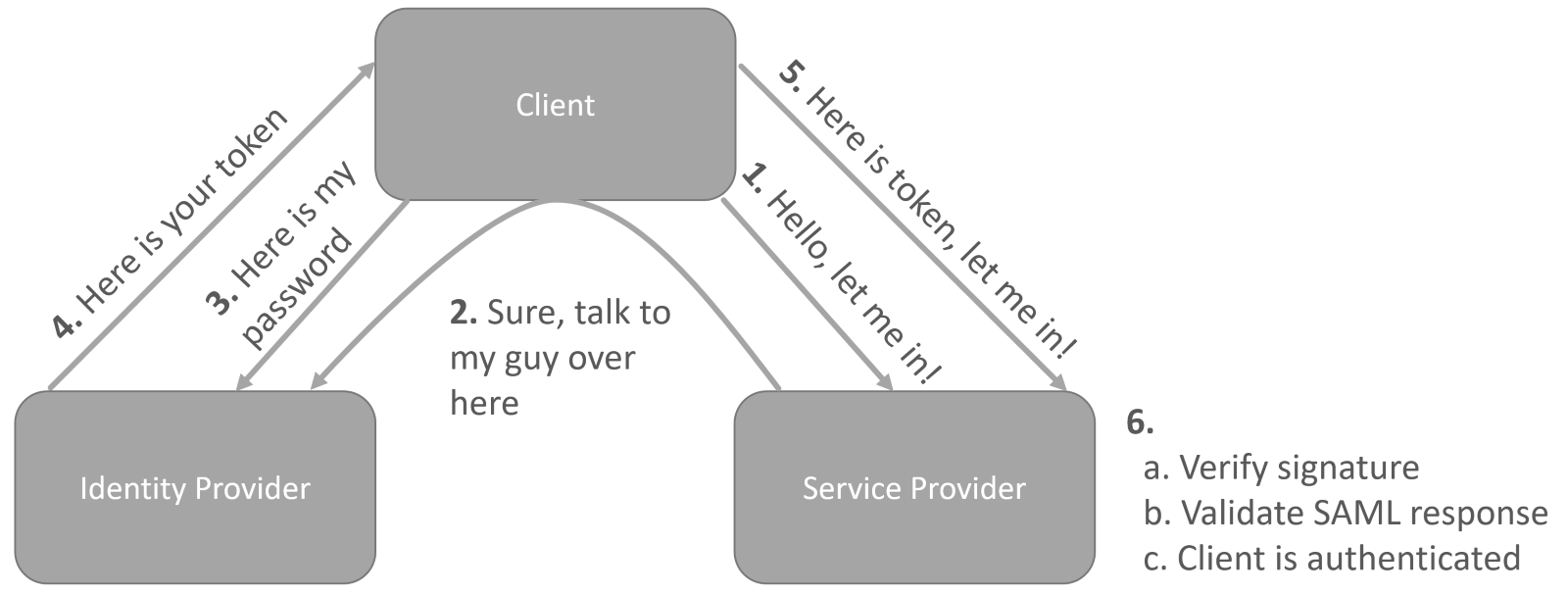
Fix 4 – with vulnerable library, references are validated before the signature validation
When processing an XML file, threat actors can use XML transformations to execute malicious code. XML transformation is the process of changing the structure or format of an XML document to create a new XML document. The transformation can be achieved by using a set of rules or instructions, known as an XSLT (eXtensible Stylesheet Language Transformation), which specifies how the source XML should be transformed into the target XML. Overall, XML transformation is a powerful tool that allows for the manipulation of XML data in a wide variety of ways – including execution of code.
Before service provider can validate the signature and identify that SAML response has been modified, the code is already executed on a compromised server. This code is executed under process <install directory>\\ManageEngine\\ServiceDesk\\jre\\bin\\java.exe.
Clusters of Attacks
In all analyzed cases, the aim of the attacks was to deploy tools on unpatched systems such as Netcat, Cobalt Strike beacon, RAT-el (open-source penetration testing tool) and others by using built-in tools like certutil.exe, bitsadmin.exe, powershell.exe, or curl.exe.
Among the cases, we have identified four main clusters of attack types and information are provided in sections below. Aside from these four clusters, we have identified a wide range of attacks that couldn’t be clustered.
Cluster 1 – Initial Access Brokers
After initial compromise, the attack continued with the following commands:
|
Command Lines |
|
|
|
|
CN.exe was identified as a Netcat – command-line tool that is often used as a backdoor. Further analyzing our telemetry, we have identified following files to be present on the same IP address and port.
|
File Name |
MD5 Hash |
Description |
|
|
9a1d9fe9b1223273c314632d04008384 |
Legitimate AnyDesk installer |
|
|
b777226ef93acdb168980bbca82a48fe |
DarkComet communicating with
|
|
|
8da896375e5d33e7d7486dbf71d008d8 |
DarkComet communicating with
|
|
|
5c0227204548c5a768c2e11da02ff774 |
DarkComet communicating with |
|
|
e0fb946c00b140693e3cf5de258c22a1 |
Netcat |
|
|
6e3b1169aac82b4d0e8ea0a24d1477d5 |
PoC from Horizon3.ai |
|
|
e2c644343fad304ccde047f3301066ba |
|
|
|
9758c592ef4b9a2279f8e80e992248b6 |
Enable RDP on port 8094 |
|
|
199cb4936f7ef64fa134eb3cefff0518 |
Reverse shell communicating with |
|
|
988038d8407d510c905183b8f6c421d6 |
Reverse shell communicating with |
|
|
edac597788e7c3df14a5fdcd13ee8916 |
|
The threat actors used multiple scripts to automate their operation. These scripts (ip<number>.sh) used following syntax to test if a target is vulnerable to CVE-2022-47966:
|
Command Lines |
|
python CVE-2022-47966.py –url https://<target ip address>:443/SamlResponseServlet –command ‘powershell echo ASDFGH > C:\Progra~1\ManageEngine\ServiceDesk\webapps\ROOT\images\a.txt’ |
|
|
The aim of these attacks was to install AnyDesk software for remote access.
Cluster 2 – Buhti Ransomware
The threat actors attempted to download any.bat to install AnyDesk software and tried to execute a ransomware payload for Buhti Ransomware. This is a new ransomware family – while we have seen previous reports of Linux ransomware written in Go language, our sample was a Windows PE executable (383b0d0dda2d7557b5cca518f53256b9).
This ransomware sample is currently detected under name ATI:Ransom.Buhti.389227C4. We have extracted the following ransom note from the encryptor:
|
———– [ Welcome to buhtiRansom ] ————-> |

Fig 5 – Screenshot of the payment site used by Buhti ransomware
Cluster 3 – Cobalt Strike and RAT-el
Threat actors tried to download malicious software using bitsadmin.exe and curl.exe tools from 212.192.246[.]232 server. The analysis of the hosted files shows that Cobalt Strike and RAT-el red teaming tools were intended to be deployed.
|
Command Line |
MD5 |
Description |
Detection Name |
|
|
|
Cobalt Strike beacon with C2
|
|
|
|
|
RAT-el communicates with C2 |
|
|
|
|
|
|
Cluster 4 – Cyber espionage
One cluster included evidence of targeted espionage operation – we decided to write a separate, more detailed report about this operation. You can read more about it in Weaponizing PoCs – A targeted attack using CVE-2022-47966 research from Bitdefender Labs.
Conclusion & Recommendations
This vulnerability is another clear reminder of the importance of keeping systems up to date with the latest security patches while also employing strong perimeter defense. Attackers don’t need to scour for new exploits or novel techniques when they know that many organizations are vulnerable to older exploits due, in part, to the lack of proper patch management and risk management.
In addition to prevention and cyber hygiene, multi-layered protection on all endpoints, servers, and workloads is critical. In our telemetry, we have identified the following indicators of compromise detected by different endpoint security modules:
Implementing IP, domain, and URL reputation is one of the most effective methods of defeating automated vulnerability exploits. According to analysis in the Data Breach Investigations Report 2022, only 0.4% of the IPs that attempted RCE were not seen in a previous attack. Blocking bad IPs, domains, or URLs on all devices, including remote and work-from-home endpoints, can be highly effective.
Finally, companies of all sizes should implement detection and response capabilities to detect any suspicious activity on the network and minimize the dwell time of adversaries. The GravityZone XDR sensors detect suspicious activity on the server or virtual machine, and alert security teams to lateral movement attempts or the establishment of an external connection by the threat actor. This technology can be augmented by good security operations, either in-house or through a managed service like Bitdefender MDR.
Ultimately, it is important to keep in mind the best protection against modern cyber-attacks is a multi-layered defense-in-depth architecture. Bitdefender GravityZone covers this by delivering prevention, protection, and detection and response in a single solution.
We would like to thank Victor Vrabie, Cristina Vatamanu, and Alexandru Maximciuc for help with putting this advisory report together.
Indicators of Compromise
An up-to-date and complete list of indicators of compromise is available to Bitdefender Threat Intelligence users. The currently known indicators of compromise can be found in the table below.
URLs
|
http://80.85.156[.]184:8085/cn.exe |
|
https://tmpfiles[.]org/dl/788858/any.txt |
|
https://tmpfiles[.]org/dl/765036/enc.txt |
|
http://212.192.246[.]232/home/svchost.ps1 |
|
http://212.192.246[.]232/temp/conhost.exe |
|
http://111.68.7[.]122:8081/svhost.exe |
|
http://146.70.126[.]178:57228/shell.exe |
|
http://185.163.45[.]86:8000/1.txt |
|
http://79.141.162[.]36:8888/aaaa.txt |
|
http://143.244.153[.]229:8090 |
|
http://160.20.147[.]145:8000/favicon.ico |
|
http://104.223.35[.]221/dashboard.html |
|
http://146.4.21[.]94/tmp/tmp/logs.php |
|
http://146.4.21[.]94/tmp/tmp/comp.dat |
|
http://45.146.7[.]20:8000/nc.exe |
|
http://149.28.57[.]130:443/Import.reg |
|
http://149.28.57[.]130:443/time.bat |
|
http://149.28.57[.]130:443/bdredline |
|
http://45.154.14[.]194:443/conhost.txt |
|
http://45.154.14[.]194:443/K7AVWScn.exe |
|
http://45.154.14[.]194:443/conhost.exe |
|
http://45.154.14[.]194:8080/conhost.exe |
|
http://45.154.14[.]194:443/K7AVWScn.pfx |
|
http://45.154.14[.]194:443/K7AVWScn.dll |
|
http://45.154.14[.]194:443/K7AVWScn.txt |
|
http://45.154.14[.]194:443/msftedit.dll |
|
http://45.154.14[.]194:443/OLE.PDB |
|
http://45.154.14[.]194:443/cmd.txt |
|
http://45.154.14[.]194:443/MainFilterInitializer.jar |
|
http://45.154.14[.]194:443/Import.reg |
|
http://45.154.14[.]194:443/time.bat |
Files
|
b777226ef93acdb168980bbca82a48fe |
|
8da896375e5d33e7d7486dbf71d008d8 |
|
5c0227204548c5a768c2e11da02ff774 |
|
e0fb946c00b140693e3cf5de258c22a1 |
|
9758c592ef4b9a2279f8e80e992248b6 |
|
199cb4936f7ef64fa134eb3cefff0518 |
|
988038d8407d510c905183b8f6c421d6 |
|
edac597788e7c3df14a5fdcd13ee8916 |
|
383b0d0dda2d7557b5cca518f53256b9 |
|
e3cff253b9ad9050eb57d957624b796e |
|
53deb494057bb8e5d72b0f53bab1cb44 |
|
527c71c523d275c8367b67bbebf48e9f |
|
61e82cae3c97887e4b367e507c4995ed |
|
c027d641c4c1e9d9ad048cda2af85db6 |
|
4960591cc04b080827020393f21c405b |
|
bfe79b11ee1b82ae95b14fd53b6c3fd3 |
IP Addresses
|
45.154.14[.]194 |
|
149.28.57[.]130 |
|
78.141.247[.]105 |
|
80.85.156[.]184 |
|
135.181.121[.]232 |
|
45.146.7[.]20 |
|
5.255.107[.]19 |
|
139.99.118[.]61 |
|
212.192.246[.]232 |
|
111.68.7[.]122 |
|
146.70.126[.]178 |
|
185.163.45[.]86 |
|
79.141.162[.]36 |
|
143.244.153[.]229 |
|
160.20.147[.]145 |
|
104.223.35[.]221 |
|
146.4.21[.]94 |
Domains
|
0xx1.kaspenskyupdates[.]com |
|
icy51j1b6sbewpauivxwfrmcu30vok.oastify[.]com |



